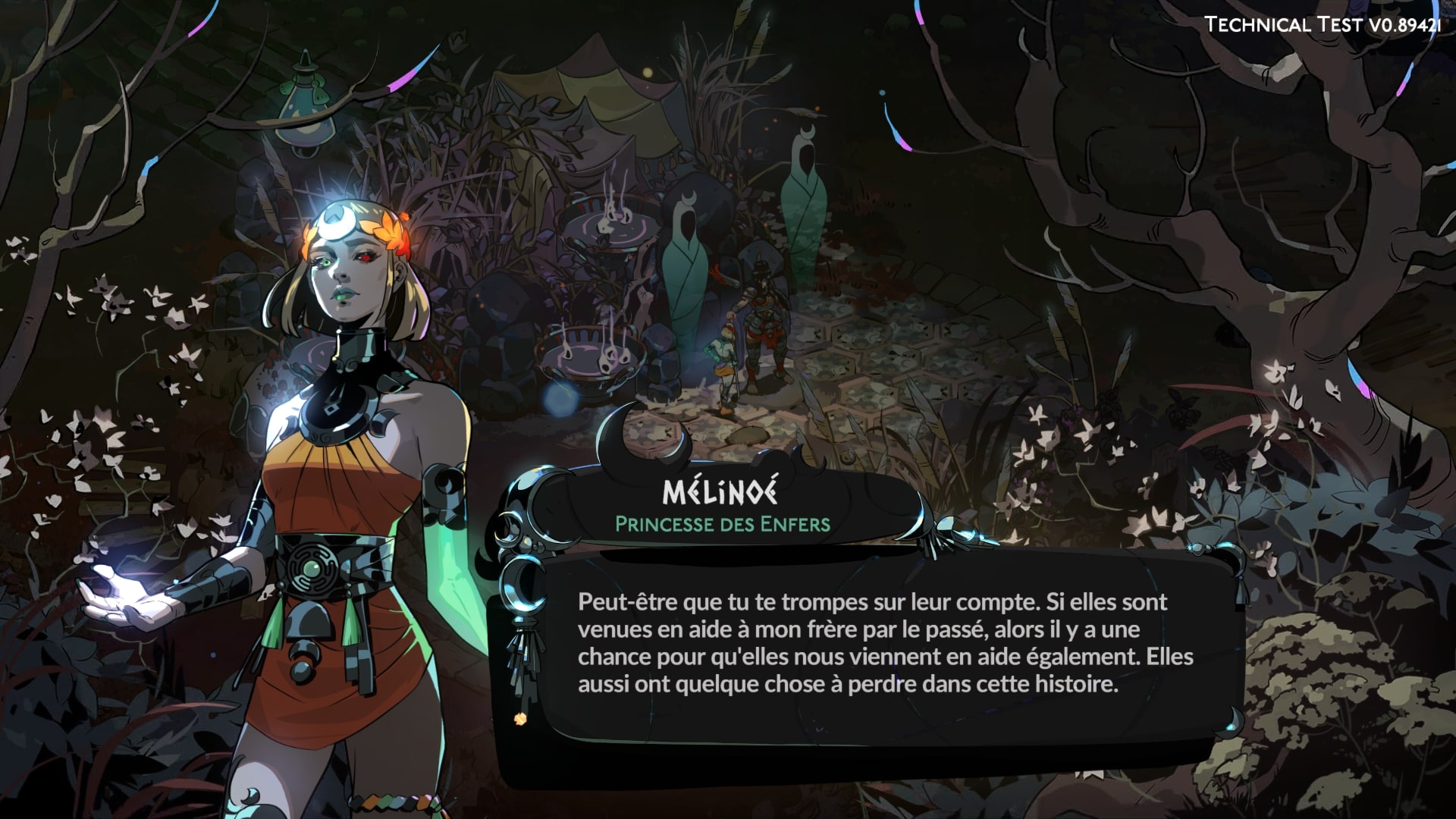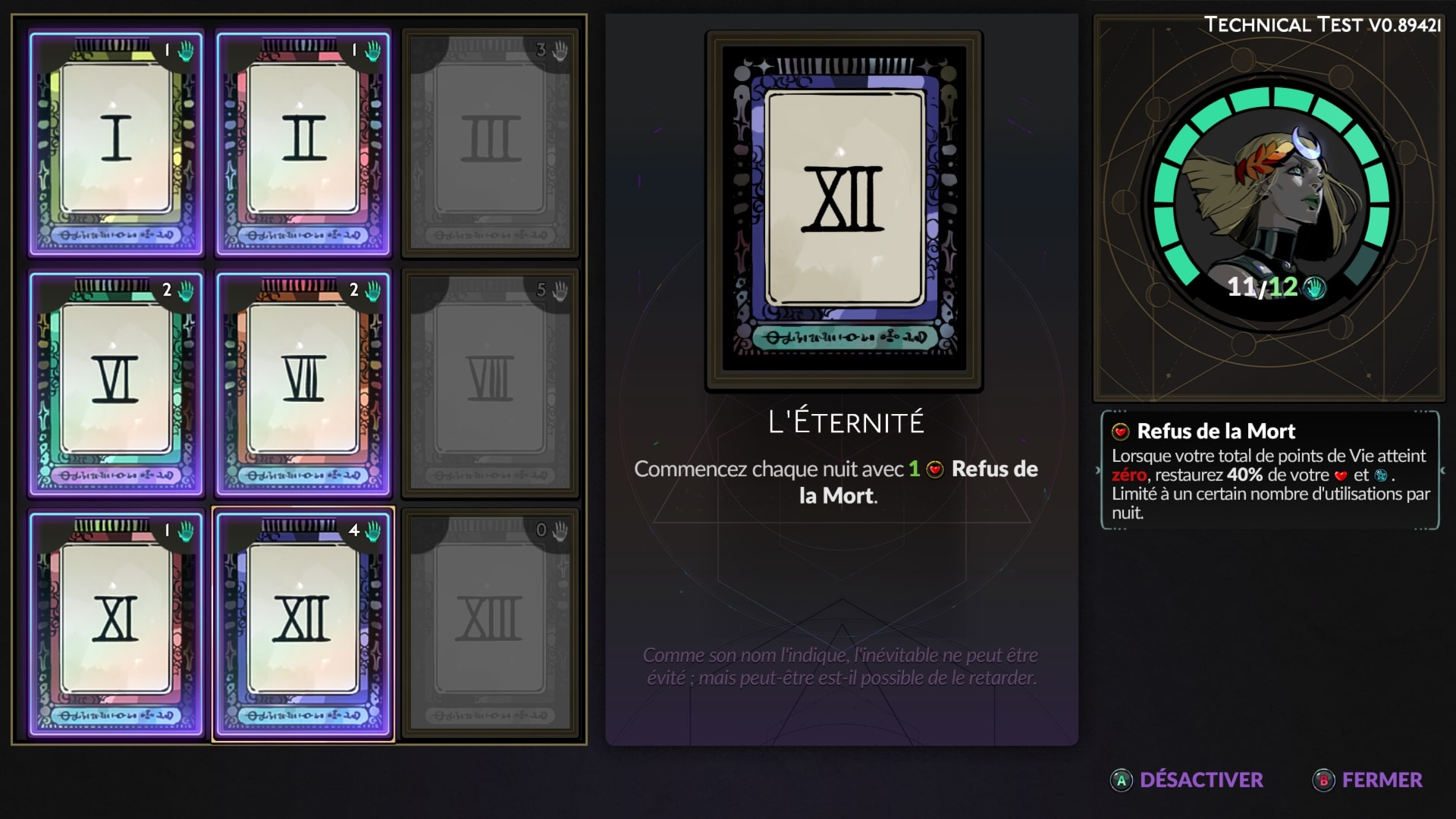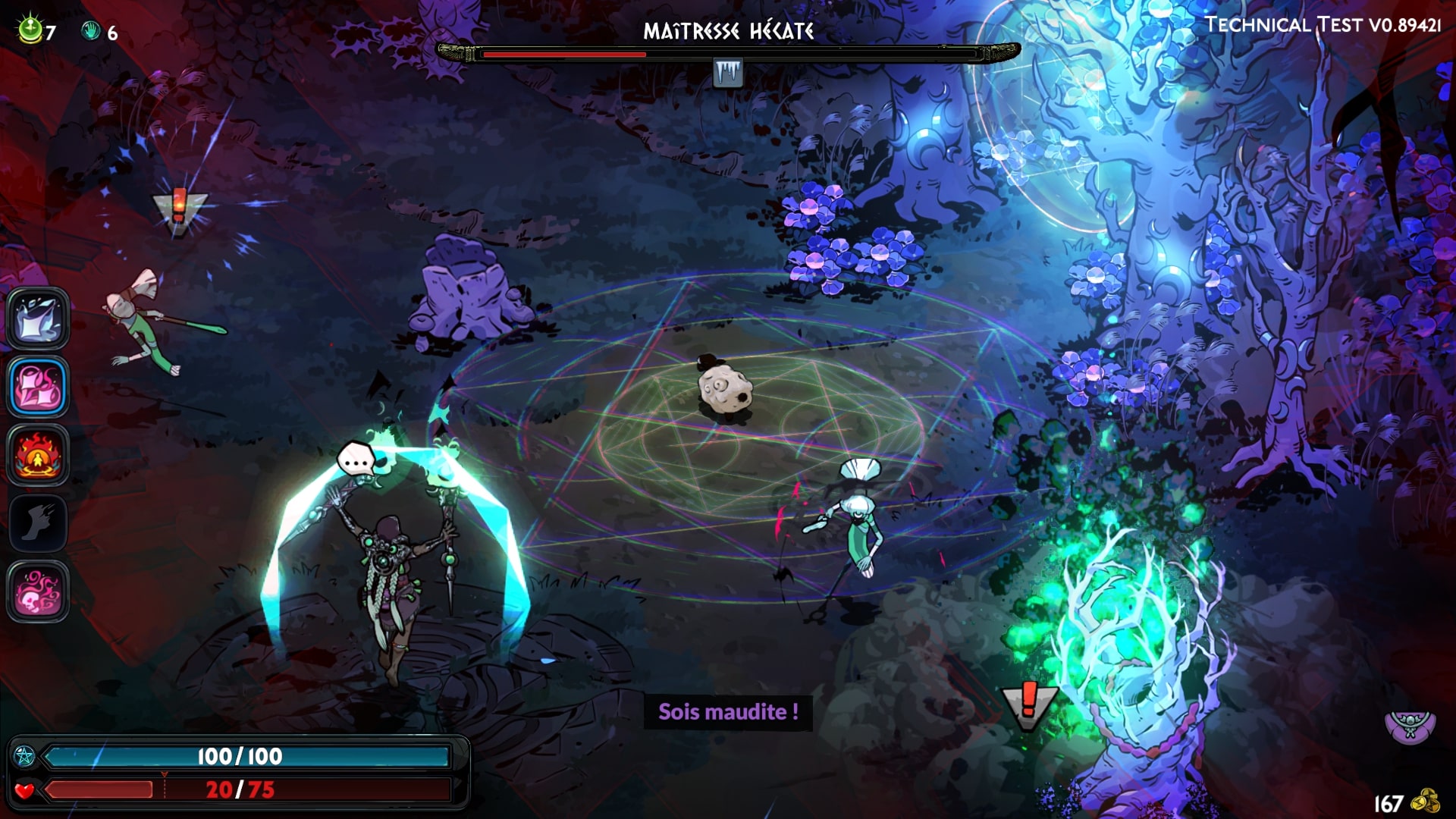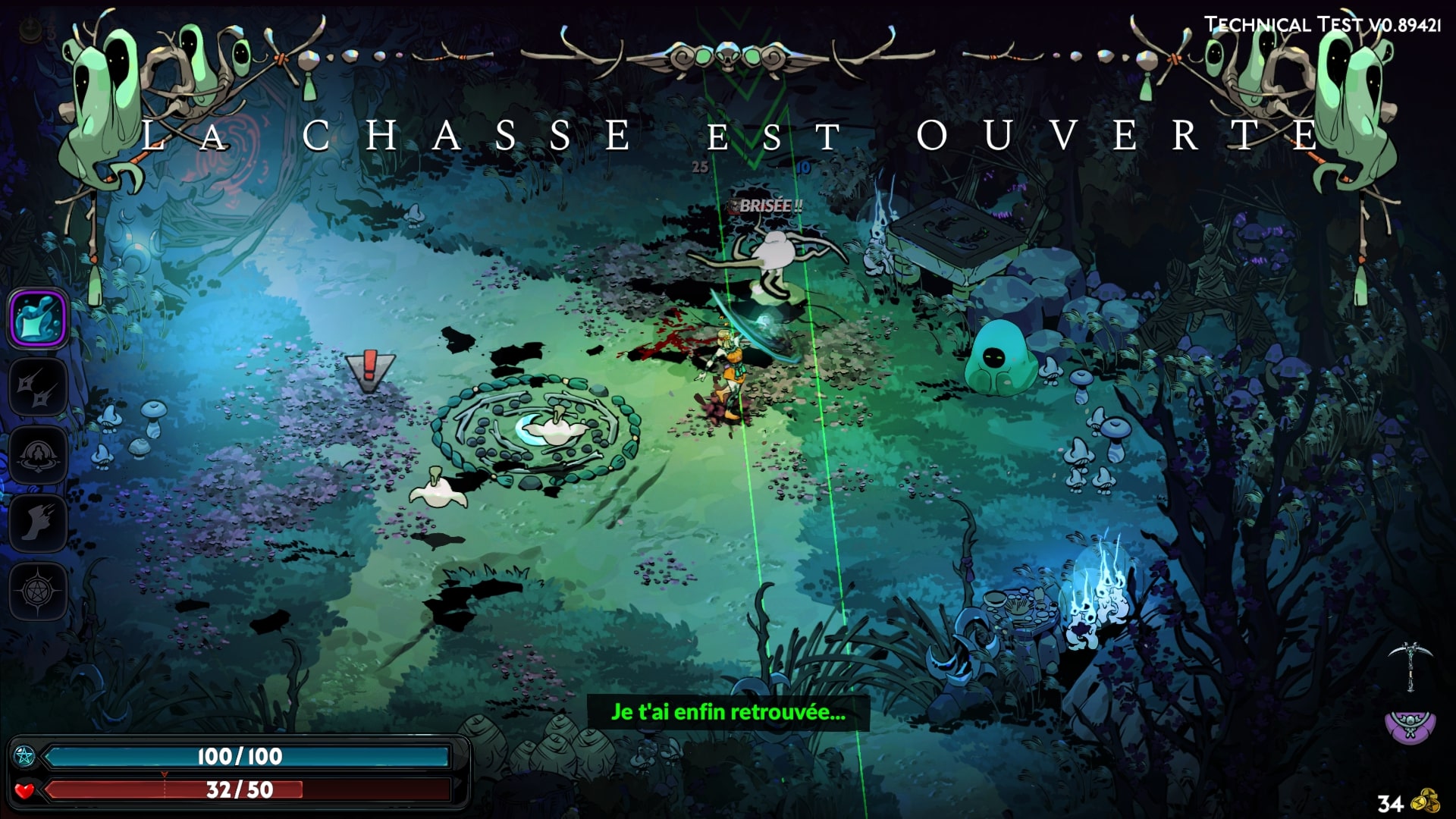A sequel in continuity
Our first contact with Hades II allowed us to quickly find our old reflexes and see that the structure of the rogue-like was the same from one episode to the next. We move from one room full of monsters to another, while obtaining rewards in each level, whether resources or benefits with the help of the gods of Olympus. The principle therefore remains the same and we quickly regain our bearings, which does not mean that Hades II looks like an easy sequence or Hades 1.5.
Advertisement
First of all, because Zagreus isn't here. Our favorite prince leaves his place to his little sister Mélinoé, and the latter does not fight like her brother, even if both possess the same ferocity. The big difference between the two lies in the fact that Mélinoé was raised by Hecate, a powerful witch, who taught her the mysteries of magic. This materializes in several ways, such as with tarot cards which serve here as definitive improvements, but which cannot all be activated at the same time (in order to offer more precise and less catch-all builds).
Our protagonist is also more seasoned when it comes to casting spells, which necessarily changes the gameplay. Unlike the hero of the first opus, Melinoe can use spells that are independent of the benefits she receives from the deities, even if she can improve them thanks to her family on Olympus.
With a simple touch, she can, for example, create a circle that will slow down enemies in the surrounding area. and inflict damage on them. Or launch a powerful straight line attack on two ends. Spells that can vary depending on the weapon she can carry, which are again very different than what could be found in Zagreus' arsenal. The technical test only allowed us to test the stick and the double blades, which necessarily change approaches. The staff, the character's signature weapon, is undoubtedly what appealed to us the most, especially by combining it with powers like that of Poseidon, which allows each attack to push enemies back with waves to throw.
Each weapon has its own skills which are governed here by mana, a central element in Hades II. You will no longer have the little red prism that Zag could cast, which is therefore replaced here by Mélinoé's spells and her management of the mana bar. This also changes a lot of things in the benefits available, which can play with this new gauge. Like Selene's spells, which differ from traditional benefits, since the goddess gives you access to a particularly formidable spell which can be triggered by spending a lot of mana.
Advertisement
Death to Kronos
Selene, here's a name that didn't appear in the first Hades. Because yes, if we find the gods of Olympus from the previous game – like Aphrodite, Zeus, Demeter and so on – with new portraits (not necessarily more successful than in the first, but more detailed), Hades II gives pride of place to a whole gallery of new characters, always well helped by an impeccable voice casting. Between Ulysses, Nemesis, Moros, Apollo and Hestiayou will meet (very) beautiful people on your way to eliminate Cronos, the Titan responsible for the unexplained disappearance of Mélinoé's family.
Hestia, goddess of the hearth, will for example give you the possibility of wielding fire in your attacks, by igniting – for example – your magic circle which slows down your enemies. This technical test was far too short to get to know the entire cast of this sequel, which will in any case be expanded during early access, but it should be much richer than in the first episode, already well-stocked .
We were only able to see here some of the new features of Hades IIas giving more importance to harvesting resources. At the start of each run, Mélinoé will be able to choose a tool in addition to her weapon, which will allow her to harvest ore or appease spirits, depending on what she finds along the way. This requires us to examine the environment a little more and to linger for a few extra seconds in these successive arenas, which also reserve a few surprises.
It must be said that with a bestiary that changes completely, this is a new learning experience that is offered to us. We of course find enemies with similar mechanics as in the first, but between an enemy who can blur your vision if you move away from him, another who constantly inflicts damage on you by shouting at you or even these annoying little ghostly balls that spin while shooting rays, we quickly feel that we will have to integrate new automations to get to the boss room in one piece.
A first boss which is also much more worked than were the Érinyes, yet already very successful. Hecate masters magic like no other and uses it to split herself, asking you to look for the right enemy, while being careful of her multiple waves of energy, which can come back at you. She even has a spell that can transform us into a simple harmless sheep, only capable of dodging to save its wool. If the other bosses are of this caliber, Hades II will certainly not have to be ashamed of the first episode.
We expect to see this with the start of early access, which should give us access to a slightly larger portion of the game. If this first preview proves more than convincing, there is still a long way to go towards the final build of the game. Between the portraits of the gods not finalized, a story that is still very mysterious, certain effects that still require work or small slowdowns in the heart of the action, we feel that we are experiencing here the beginning of a very long journey. A journey where each step will be savored, if Supergiant takes as much care as during the early access of the first Hades. And we can't wait to discover each step.



